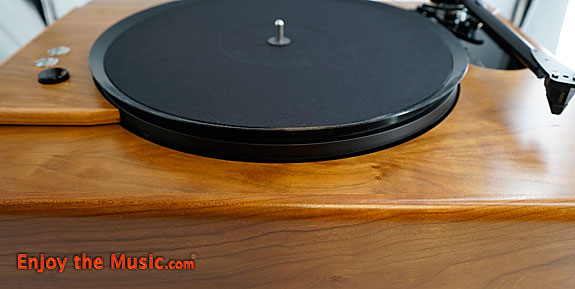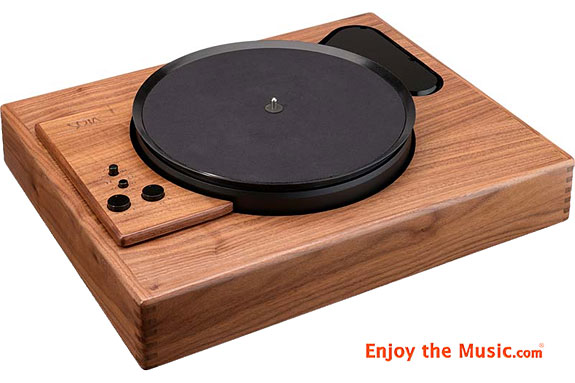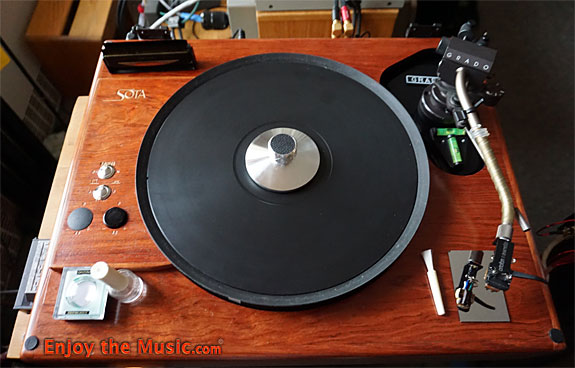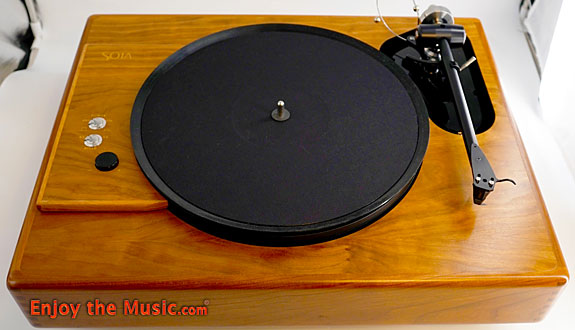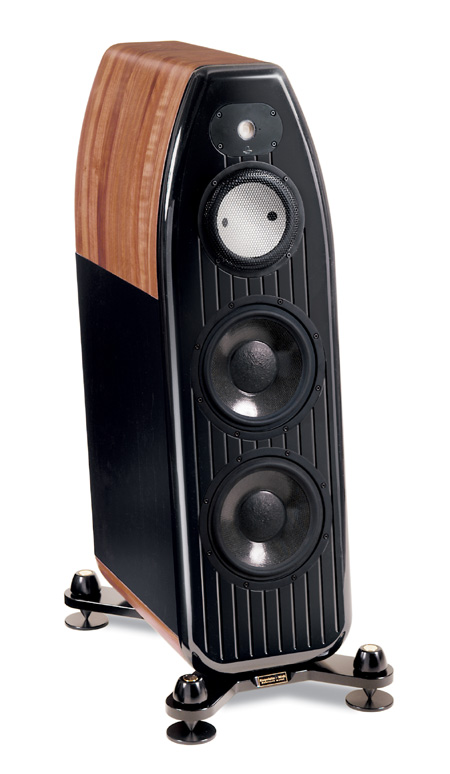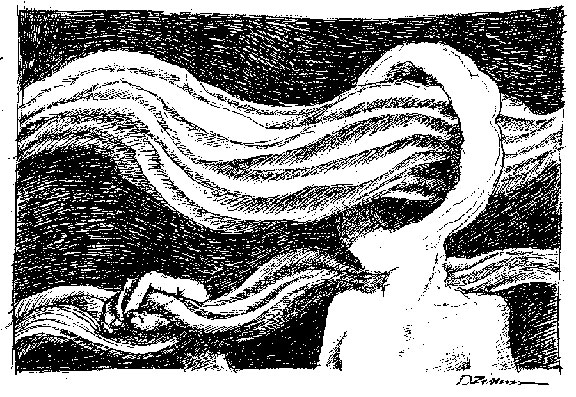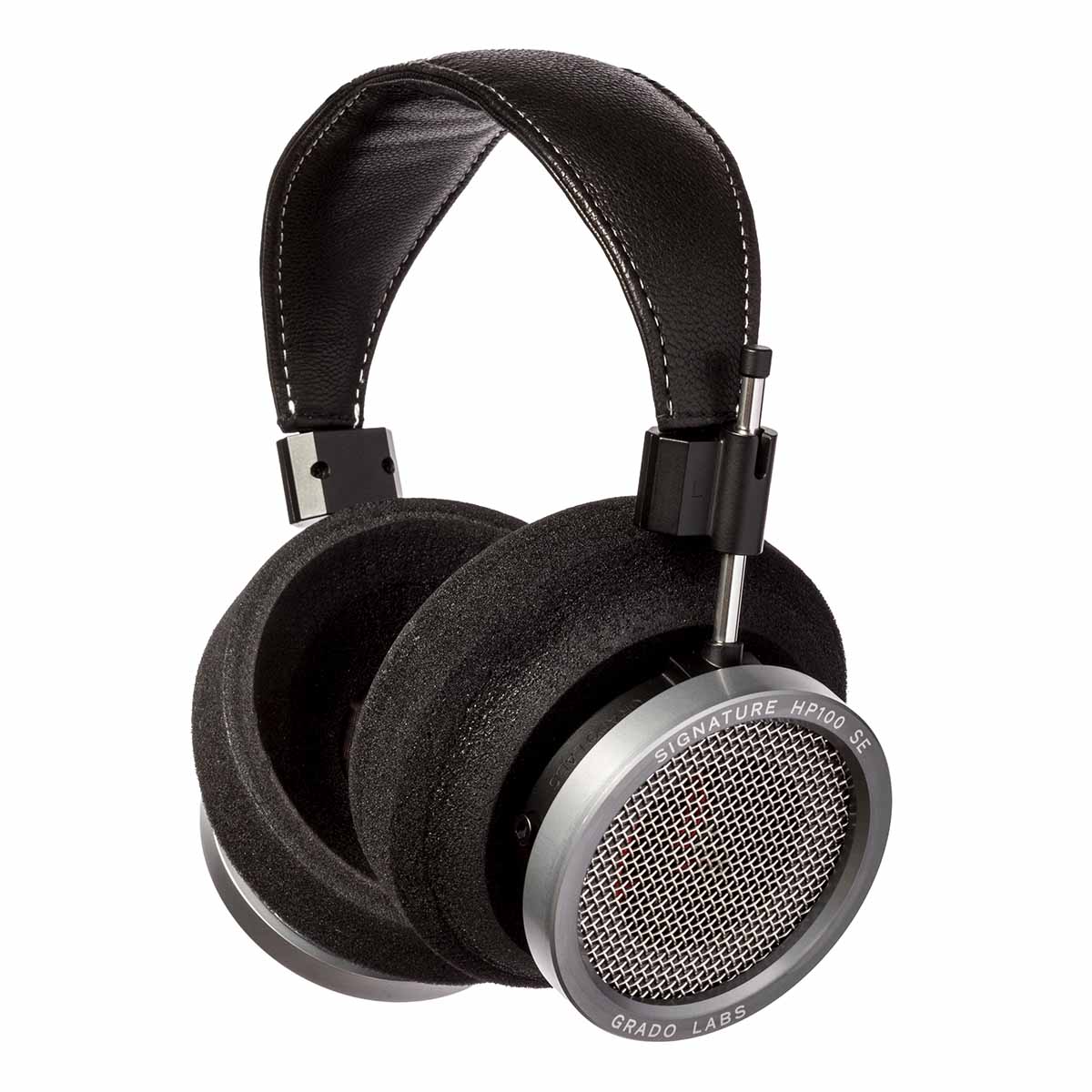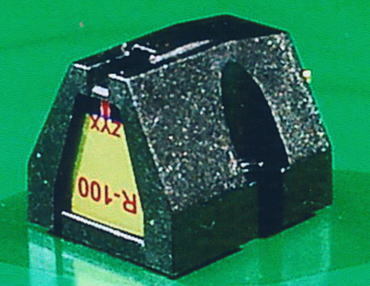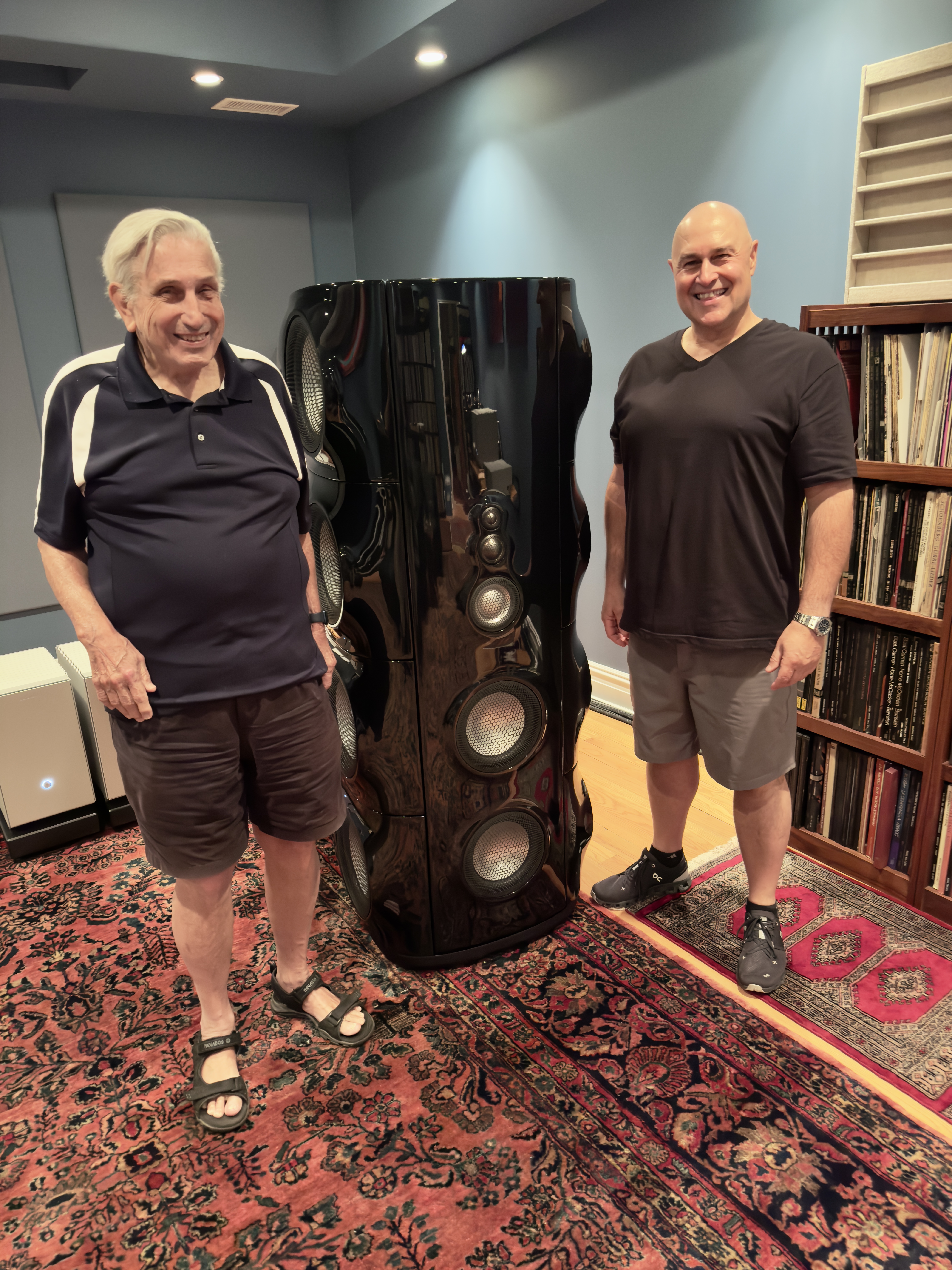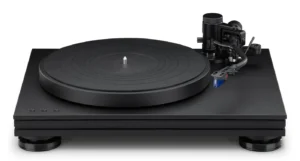World Premier! The new SOTA sound allows music to become tactile.
With this article, Positive Feedback continues its content-sharing relationship with Enjoy the Music Ron Nagle shares his thoughts on the SOTA Nova VI Vinyl LP Turntable.
Dr. David W. Robinson, Editor-in-Chief
There was a time when my school shoes wore out; my mom would take them to the shoe repairman. He would fix them like new with Cats-paw rubber heels. At about that same time I remember when our Zenith console television died. My father would go down to the local hardware store to use their tube tester. For three or four dollars he would buy a new vacuum tube. Very soon we would be back to our black and white TV bliss. I guess since then a few things have changed. But let us now carry that forward to the present. Understand that for 20 years I spun vinyl disks on my reliable reference, a SOTA Sapphire 2, but alas time takes a toll. So what can you do if you have something you can't part with?
A Brief Back Story
No formal history can be found, but back in 1978 or 1979 Rod Herman, and later on David Fletcher and Robert Becker, were the owners of SOTA. Incidentally, the company name is an acronym for the phrase, State Of The Art. The original founders retired in 1991, and subsequently the SOTA company was sold to Jack and Helen Shafton, and later to Kirk and Donna Bodinet. In 1992, Kirk and Donna separated from the company, but continued to operate as subcontractors until 1996.
Kirk Bodinet continued to design with Jack Shafton through the 1990s. Kirk and his spouse Donna operated SOTA Sales and Service from 1996 to 2017. They manufactured new turntables and serviced and rebuilt older SOTA turntables. In January 2018 a talented engineer and designer named Christian Griego came on board and joined Ms. Bodinet. Presently the company functions as a partnership with Donna Bodinet and Christan Griego.
The last formal SOTA Nova review I could find was back in April 2012. It had high praise for the Nova Mk 5. Today the extensive redesign innovated by SOTA merits an evaluation of the Nova MK VI as a brand new product.
The Very Basics
The arch-enemy of vinyl playback is spurious vibrations that have nothing to do with music, and so there are two basic methods used to eliminate it. The first is the most common called mass damping. The idea is if you make something so very heavy it will resist movement and not transmit vibrations. The second method is to use a compliant belt drive and spring isolation. This keeps the record and cartridge and tonearm from unwanted vibrations by mounting them on a separate and isolated platform. This is the method used by SOTA, and the famous British Linn LP12. My very first turntable, the Acoustic Research XA, was a belt-driven spring suspension design by the great Edgar Villchur.
Today
At the present time, SOTA Sound Inventions is located in Delavan, Wisconsin. The company manufactures seven different turntables. Starting at the top of the line is the Millennia Eclipse at $10,750. Contrasting this as the least expensive is the SOTA Moonbeam that sells for $1250. In today's market that Moonbeam price is still considered entry-level and affordable. Even the relatively inexpensive Moonbeam comes equipped with a very respectable Rega 220 tonearm. During a show I stopped to look in at the SOTA Sound Inventions exhibit.
At that show SOTA displayed their lineup of turntables along with a choice of two tonearms. They displayed a turntable with a Rega 220 arm and another with an Origin Live tonearm. That arm is an extensive modification of a stock Rega tonearm.
A brand new basic SOTA Nova VI sells for $4500 without the vacuum platter. The Nova VI with the vacuum feature adds $1200 to the price for a total of $5700. SOTA Sound Inventions still maintain a repair service and a rebuild service for older SOTA tables. I should mention that all SOTA turntables, regardless of age, have some degree of trade-in value. In my case, I saved about $1600 with trade-in parts from my old SOTA turntable.
You still can have them custom build a turntable to your specifications. Alternately, you may want to supply and use a tonearm of your choice, as I did. Additionally, you may choose from their standard selection of three wood plinths, Oak, Walnut, or American Cherry. Or if you are willing to wait a bit longer SOTA has an option to custom build plinths from a selection of exotic hardwoods. That is exactly what I did.
Genesis
It was about two months after I sent in my original SOTA table that my Nova VI arrived at my front door. It was packed in two cardboard UPS boxes; the larger box held the turntable body and the smaller box held the platter and the SOTA power supply with the vacuum pump. Both of these are contained in the same wood enclosure. Incidentally, the vacuum tubing/hose is 12 feet long. That allows you to place the vacuum pump farther from the turntable. SOTA generously provides a lifetime trade-in program, which allows you to trade in an old SOTA turntable for credit toward a new turntable. If your old table has any reusable parts they can (if they are in good shape) incorporate them in the rebuild, and that may lower the cost of your turntable. I was able to use my existing dust cover and the table's feet so that saved a bit.
Or if you choose, SOTA can issue a credit based on parts toward a new model turntable. Additionally, they provide a two-year warranty on a new table, and one year on a rebuild. To my knowledge, this is the only high-end company that offers such a generous and comprehensive policy for their products.
Set-Up
The first thing to mention is the entirely new way SOTA packed and shipped the Nova VI.
It now comes in two cardboard boxes. The larger box holds the table itself. It is securely held within thick purposely molded foam inserts. The same is true of the smaller box containing the heavy platter, and packed underneath that you will find the wooden enclosure containing the vacuum pump and power supply. The enclosed assembly instructions are very clear, but I would like to add two specific warning notes. SOTA supplies a bottle of oil and cotton swabs to apply oil to the platter bearings. Make sure you apply the oil before you put the platter in place. The second note would tell you to attach the vacuum tube to the vacuum fitting on the bottom of the table before you install that heavy platter.
The most fiddly part of the Nova assembly is leveling and balancing the platter. (SOTA supplies a bubble level.) After you get that roughed out the next step is adding some lead weight (supplied) to a cup/well under the tonearm board so it floats level with the platter. The tonearm board is part of the compliant sub-assembly, and after weighting it will match the suspension of the platter. Of course how you set up your tonearm is now strictly up to you. At this part of the assembly, I spent more time adjusting the arm and cartridge than spent setting up the table. My best advice is to take your time to follow the instructions, and if you run into a snag you can always call the SOTA helpline.
With the turntable running you can listen with a stethoscope on the plinth/base, and you can hear just how well the platter bearing and motor noise is isolated. On the plinth of the table, the motor noise has a very low-level hum, yet it is isolated by the drive belt and should not get through to affect the sound. One last turntable measurement remains, and that is the rotational speed of the record platter. If necessary, SOTA provides a way to adjust record / platter speed by a factor of plus or minus +/- one Hertz.
The speed of the record platter does have a very large effect on the pitch of the music you hear. If it is too fast your recording can sound like a Keystone Cops movie soundtrack. Measuring the platter rotation with my digital optical tachometer I get a reading of 33.3 rpm while tracking a record. At 45 rpm, the tachometer strobe readout proves to be exactly 45.000 rpm. Both readings agree exactly with the SOTA Roadrunner tachometer speed readout. This is held rock steady by the Condor motor drive system.
Unmatched Innovation
Why is this SOTA now a brand new turntable? Just keep reading....
The SOTA turntables of 2020 are a very different animal than the SOTA of previous years. My new Nova IV turntable incorporates a vacuum hold record platter, a new Maglev magnetic platter bearing suspension, and a special new more powerful three-phase AC synchronous motor system, a Condor motor power supply developed by Phoenix Engineering, a Hall sensor platter speed monitor, and an external digital speed regulating tachometer with a five-digit numerical readout for 33.300 RPM and 45.000 RPM. The speed range is adjustable by about six percent. SOTA allows you the choice to include an additional 78 RPM speed. The floating sub chassis utilizes a four spring hanging platform suspension, and now it is made with a new very thick phenolic material. In addition, the sub-chassis now includes a one-inch thick CNC (Computer Numerically Controlled) machined aluminum reinforcing piano brace.
This brace holds the magnetic platter bearing and tonearm base together as a single unit (similar to the Rega 10). The platter is also precision CNC machined from billet aluminum instead of the older casting process. Added to the platter rim it now has a peripheral lead ring greatly enhancing the flywheel effect. Note: You can retain your original platter and save some money. There are three SOTA tonearm board configurations to chose from. I opted to have my Grado Laboratory tonearm mounting board upgraded by including a reinforcing and vibration-damping aluminum layer. As you can see I wanted all the bells and whistles with the whole package wrapped up in a beautiful custom-made African Rosewood body.
The Sound
Note: I used a Denon 103 ll MC cartridge mounted on my Grado laboratory tonearm for this evaluation.
No matter what recording I placed on the revised Nova VI, by comparison with my original SOTA Sapphire 2 turntable, the sound was far more revealing. The comparison is radically different like comparing apples to oranges. The term quiet refers to a very black background that allows softer micro-dynamic textures to be dug out of the musical performance, even listening to my reference recordings that I have used countless times.
It told the truth and nothing but the truth. Let's get a little technical. The job of the cartridge is to turn a mechanical force into a decipherable electrical signal. In theory, all elements of the system must be transparent. The SOTA table should add nothing and leave nothing behind. The theory is one thing, the actual doing seems like a crazy idea. Dragging a diamond around a plastic groove to recreate an atmospheric disturbance is totally nuts. But if you spend one hundred years or so ironing out the kinks, amazing things can happen, and they do.
My notes refer to one of my old reference recordings. This is a two-dollar flea market acquisition by Sting, The Dream of the Blue Turtles Vinyl [A&M SP-3750]. Listening to the very first cut, "If you Love Somebody Set Them Free." This is one of the least messed with and least compressed records that I own. The backing chorus of voices chants, "free, free, set them free!"
From the very first uttered phrase there is something people call the "jump factor" (transient attack) and that is present beyond any doubt. From somewhere deep in the center stage the backing voices chant, "free, free, set them free," this dynamic chant reverberates off an imagined rear wall. The air is charged with exciting transient dynamic energy. In the softer passages, the sound has a subtle and yet familiar quality, you have heard it somewhere before, and then it dawns on you. The sound is amazingly clean and clear with an ineffable quality very much like a reel to reel tape recording.
Coda
I marvel at the advances SOTA has made to the Nova VI turntable. I do not think it has any weaknesses. The platter vacuum pump is dead quiet. The pump runs in two stages, initially it applies a higher vacuum at startup or when a record is changed and then it dials back after the record is secured. Note: It will not flatten a warped record.
There seems nothing has been overlooked. As it stands now I believe there is no other compliant suspension turntable that can surpass it. It is very competitive with even the five-figure price tags of many mass-loaded tables. It is the State Of The Art. It allows music to become tactile. This is especially true with a locked-down society as it will carry you away to a far better place. Dim the lights, wrap yourself in a warm blanket, sip a cup of hot chocolate… and enjoy the music. I did!
Remember to enjoy the music and from me, Semper Hi-Fi!
Specifications
- Type: 33.3 and 45 rpm analog vinyl LP turntable
- Platter: Individually-balanced, one-piece aluminum platter, CNC precision-machined, internally damped. 9 lbs. Topped with vinyl mat, (with molded silicone vacuum lip and optional anti-static Groove Damper Mat standard on vacuum tables)
- Platter Bearing: Stainless Steel shaft, machined sintered bronze sleeves hand fit for each table. Platter levitates with opposing magnets.
- Armboard Mounting: Multi-Layer Acrylic and Aluminum. Sub assembly 1" thick aircraft grade aluminum Piano Brace balanced to the tonearm.
- Separate Power supply 5" x 4" x 3.25" transformer box, 120V or 240V compatible, fuse-protected. (13" x 8" x 5" for vacuum tables)
- Motor: High-Efficiency A/C motor with double-regulated, synthesized sine-wave drive and balanced pulley (Different for Eclipse package)
- Speeds: 33.3 and 45 rpm with independent fine tuning
- Adjustable Dual-Phase drive: Creates higher torque and minimizes vibration; very high end and very few manufacturers offer this.
- Frequency Resolution: 0.01Hz
- Frequency Stability: 30PPM Crystal controlled is the only way to go for a synthesized PSU; analog drives need not apply.
- Adjustment Range: +/-1Hz for both 33.3 and 45 rpm
- Other Features: 20-bit DDS sine wave generator. Adjustable Freq/phase, factory default, upgradable firmware. All parameters stored in non-volatile EERPOM.
- Dust Cover: Available upon request
- Finishes: Oak, American Cherry, or walnut. Rare woods available by request.
- Warranty: Two-year parts and labor.
- Suspension: Four-point spring-suspended sub-chassis
- Transmission: Belt drive
- Weight: 44 lbs.
- Dimensions: 7.5" x 20.25" x 16.5" (HxWxD)
- Price: $4500 (with vacuum platter is $5700)
SOTA Sound Inventions
1436 Mound Rd.
Delavan, WI 53115
608.538.3500
Check out Enjoy the Music for more articles and reviews







